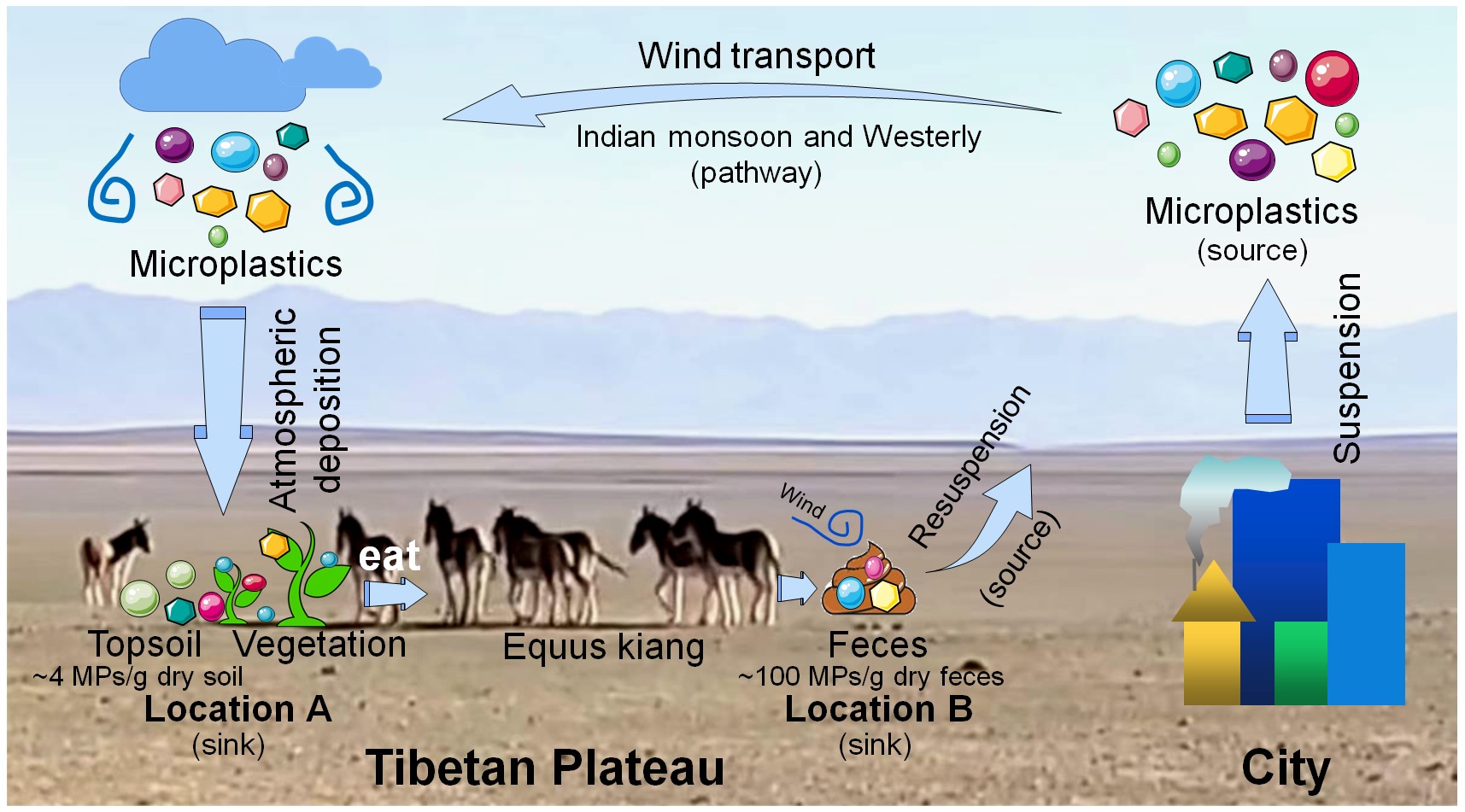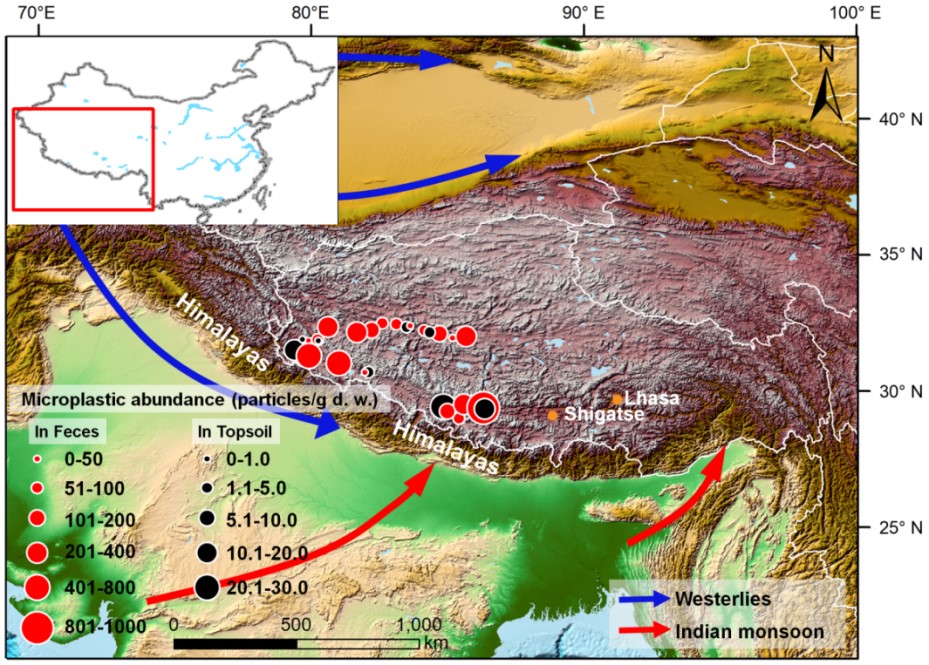Microplastics (MPs) as a potential indicator of the Anthropocene, are typical pollutants completely derived from human activities. Currently, research on the extent of microplastic exposure and transmission patterns in remote terrestrial wildlife is relatively scarce. Particularly for the Tibetan Plateau, which possesses unique geographical and climatic characteristics, although studies have confirmed the presence of microplastic pollution, the transmission mechanism of microplastics in the Tibetan Plateau remains relatively unclear.
In this work, we conducted a detailed investigation of microplastics in the lithosphere (soil) and biosphere (feces of Equus kiang, a nationally protected species) in the southern region of the Tibetan Plateau. we evaluated the degree of microplastic harm to the endangered national first-level protected animal, the Equus kiang, and discovered a unique transmission mechanism of microplastics in the terrestrial wildlife's feeding and migration processes in the Tibetan Plateau. The research investigation revealed that the median abundance of MPs in Equus kiang feces and soil in the area reached 102 and 4.01 particles/g dry weight (20-500 μm range), respectively, with both forms predominantly composed of thin, elongated fiber particles of approximately 50 μm. A total of 29 types of MPs were identified in the feces, while 26 types were found in the soil. Further research revealed the presence of MP transmission along the terrestrial food chain in the southern region of the Tibetan Plateau. The Equus kiang, after ingesting MPs and accumulating them in their bodies (enrichment factor ~25) at one location, may become a "new" source of MP pollution when migrating to other remote areas of the plateau. Taking a population of 20 Equus kiang as an example, the potential transport flux of MPs was estimated to be 1736 particles?m?2?a?1. The migratory behavior of terrestrial wildlife may facilitate the spread of microplastics into the deeper regions of the plateau. Additionally, due to the Tibetan Plateau's southern proximity to human settlement areas in South Asia and East Asia, the long-distance atmospheric transport of a large quantity of MPs serves as an important pathway for MPs to enter the southern region of the plateau. MPs transported by the atmosphere settle on the surface of the Tibetan Plateau or are intercepted by vegetation, are subsequently ingested and accumulated in terrestrial wildlife, and are then transported to other locations before being excreted. Finally, MPs in feces are resuspended as a source of propagation under the action of wind, completing a transmission process of "atmospheric deposition-vegetation-feces-atmosphere" from the source to the sink and back to the source. This may represent one of the special "source-sink-source" transmission modes of microplastics in the Tibetan Plateau.
The findings of this study are crucial for a deeper understanding of MPs pollution and its impacts on the ecological environment of the Tibetan Plateau, providing new insights into the ecological hazards of MPs and the Earth system feedbacks in terrestrial ecosystems.
The research work was jointly funded by the National Natural Science Foundation of China, the the Strategic Priority Research Program of Chinese Academy of Sciences (B), the 2nd Tibetan Plateau Scientific Expedition and Research, and Youth Innovation Promotion Association CAS. The relevant results were published in the Environmental Science & Technology.

Fig. 1. Schematic diagram of the transmission process of microplastics on the Tibetan Plateau

Fig. 2. Sampling sites and microplastics abundance distribution in topsoil (black circles) and kiang feces (red circles) across Tibetan Plateau. Units: particles/g dry weight (d.w.). Schematic shows westerly winds and Indian monsoon propagation paths.
Contact: Li Yang , Institute of Earth Environment, Chinese Academy of Sciences, Xi'an, China. Email: liyang2018@ieecas.cn
 © 2015 Institute of Earth Environment,CAS
© 2015 Institute of Earth Environment,CAS Address:No. 97 Yanxiang Road, Xi'an 710061, Shaanxi, China

 Location :
Location :